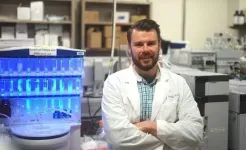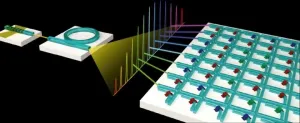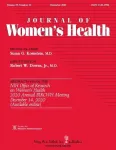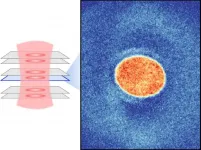(Press-News.org) Drug-resistant bacteria could lead to more deaths than cancer by 2050, according to a report commissioned by the United Kingdom in 2014 and jointly supported by the U.K. government and the Wellcome Trust. In an effort to reduce the potential infection-caused 10 million deaths worldwide, Penn State researcher Scott Medina has developed a peptide, or small protein, that can target a specific pathogen without damaging the good bacteria that bolsters the immune system.
Medina, an assistant professor of biomedical engineering, led the team who published its results Jan. 4 in Nature Biomedical Engineering.
"One of the best protective mechanisms we have to prevent infection are beneficial bacteria that inhabit our bodies, known as commensals," Medina said. "For example, we often avoid food poisoning because our guts are already populated by helpful bacteria. There's no room for the pathogen to take hold and colonize. If you wipe out the good bacteria, opportunistic pathogens can take advantage and cause infections."
Antibiotics can knock out an infection, but they can also kill off good bacteria, creating an opportunity for a potentially fatal secondary infection. Repeated exposure to antibiotics can also breed bacteria resistant to drugs. The potential for secondary infection and drug-resistant bacteria holds true for infections elsewhere in the body, too, according to Medina.
Led by biomedical engineering doctoral student Andrew W. Simonson, first author on the paper, the team set out to develop a peptide that could eradicate the pathogen that causes tuberculosis (TB), one of the top 10 causes of death worldwide, without harming surrounding good bacteria.
"There are great control strategies and treatments in place for tuberculosis, making it largely preventable and treatable, but drug-resistant TB is an emerging threat that is on track to becoming a serious global health problem," Medina said. "It's a scary prospect."
To develop a pathogen-specific antibacterial against TB, the researchers looked to the pathogen itself. The TB pathogen is wrapped in a thick envelope that is difficult to penetrate, especially compared to other bacteria.
"The envelope has pores, though -- channels through which the pathogen takes in nutrients and metabolites," Medina said. "We asked if we could mimic these channels to design antibacterials that would create holes in the bacterial envelope, and ultimately kill the pathogen."
The researchers made a peptide that seems to disrupt the protective outer coating of the pathogen, making the TB bacteria susceptible to antibiotics and die, but it does not interact with the good bacteria. Medina said they are currently studying the exact mechanism by which the peptide attacks the TB pathogen, but they suspect it has something to do with a fatty acid that lives on the pathogen's surface.
"There aren't many biochemical differences between the targeted pathogen and good bacteria, except for this surface lipid," Medina said. "We think the interaction of our peptide with this fatty acid is one of the things driving this preferential interaction."
He also pointed to the bacteria's thin carbohydrate region. In other types of bacteria, the carbohydrates form a thick defensive barrier that appears to insulate the bacteria against the peptide.
"It's not entirely clear why this works, but it's working on TB," Medina said. "There's a 10-fold improvement on the effectiveness of antibiotics on this pathogen relative to the other good bacteria."
Next, the researchers plan to investigate how to administer the peptide to treat TB in a full model system. Peptides tend to break down when injected, Medina said, so his team is working to develop an aerosol that would allow a person to inhale the peptides directly to the infected lung tissue.
"Once we understand why this peptide targets TB, and how to administer the peptide as a viable therapeutic, we can use this platform to design antibacterials toward other lung pathogens," Medina said.
INFORMATION:
Other contributors from Penn State include Agustey S. Mongia, Matthew R. Aronson, Atip Lawanprasert, Aida Ebrahimi, Dennis C. Chan, Elizabeth Proctor, Adam Bolotsky, Tapas K. Mal, Christy George, John Alumasa and Kenneth C. Keiler. Michael D. Howe and Anthony D. Baughn, from the University of Minnesota, also contributed.
The National Institutes of Health supported this work.
Ikoma, Japan - Ultrasmall integrated circuits have revolutionized mobile phones, home appliances, cars, and other everyday technologies. To further miniaturize electronics and enable advanced functions, circuits must be reliably fabricated in three dimensions. Achieving ultrafine 3D shape control by etching into silicon is difficult because even atomic-scale damage reduces device performance. Researchers at Nara Institute of Science and Technology (NAIST) report, in a new study seen in Crystal Growth and Design, silicon etched to adopt the shape of atomically smooth pyramids. Coating these silicon pyramids with a thin layer of iron imparts ...
ITHACA, N.Y. - For more than seven years, a mysterious wasting disease has nearly killed off sea star populations around the world. Some of these species stand at the brink of extinction.
New Cornell University-led research suggests that starfish, victims of sea star wasting disease (SSWD), may actually be in respiratory distress - literally "drowning" in their own environment - as elevated microbial activity derived from nearby organic matter and warm ocean temperatures rob the creatures of their ability to breathe.
"As humans, we breathe, we ventilate, we bring air into our lungs ...
In the digital age, data traffic is growing at an exponential rate. The demands on computing power for applications in artificial intelligence such as pattern and speech recognition in particular, or for self-driving vehicles, often exceeds the capacities of conventional computer processors. Working together with an international team, researchers at the University of Münster are developing new approaches and process architectures which can cope with these tasks extremely efficient. They have now shown that so-called photonic processors, with which data is processed by means of light, can process information much more rapidly and in parallel - something ...
Young adults ages 18-24 years old in the U.S. say that porn is their most helpful source of information about how to have sex, according to a new study led by a Boston University School of Public Health (BUSPH) researcher published in the journal Archives of Sexual Behavior.
In the nationally representative survey, a quarter of young adults said porn was their most helpful source of information about how to have sex. Slightly less than a quarter said sexual partners were the most helpful source, and fewer pointed to friends, parents, media, or healthcare professionals. However, female respondents were much more likely than male respondents to report that their partners ...
2020 was an eventful year, with science at the front and center of most news cycles. As this seemingly long year wraps up, Chemical & Engineering News (C&EN), the weekly newsmagazine of the American Chemical Society, is highlighting the biggest chemistry stories, top research trends and predictions for the coming year.
Predictably, research on the novel coronavirus was the biggest chemistry story of the year, beginning in January when the genetic code for SARS-CoV-2 was published. Since then, thousands of papers have been published on the subject, with topics like mask efficacy, disinfectants and virus transmission getting the most attention. Other popular chemistry subjects included new insights about the atmospheres of other planets and how climate change fueled ...
Cardiovascular disease is the leading cause of death associated with smoking cigarettes. But as use of e-cigarettes ("vaping") becomes more popular, including as a way to cut back on cigarettes, little is known about its effect on cardiovascular health.
Now, a new Boston University School of Public Health (BUSPH) study, published in the journal Circulation, finds that vaping may not cut risk of cardiovascular disease in the way that most adults use them--in combination with cigarettes.
"Dual use of cigarettes and e-cigarettes appears to be as harmful to cardiovascular health as exclusive cigarette smoking," says study lead author Dr. Andrew Stokes, assistant professor of global health at BUSPH.
Stokes ...
New Rochelle, NY, January 6, 2021--Women physicians feel pressured to spend more time in work-related citizenship tasks, based largely on their age and race. Nearly half of women perceived that they spent more time on citizenship tasks than their male colleagues, according to a study in Journal of Women's Health. Click here to read the article now.
"When compared to their younger counterpart, women physicians older than 49 years stated to feel obligated to volunteer for these tasks because of their age," state Priscila Armijo, MD, University of Nebraska Medical Center, and coauthors. "We also found that a higher proportion of women of color physicians perceived race as a factor in feeling obligated to volunteer for work-related citizenship ...
They are as thin as a hair, only a hundred thousand times thinner--so-called two-dimensional materials, consisting of a single layer of atoms, have been booming in research for years. They became known to a wider audience when two Russian-British scientists were awarded the Nobel Prize in Physics in 2010 for the discovery of graphene, a building block of graphite. The special feature of such materials is that they possess novel properties that can only be explained with the help of the laws of quantum mechanics and that may be relevant for enhanced ...
Starting as a single cell, organisms undergo millions of generations of divisions to ultimately generate the bones, heart, brain and other components that make up a living being. The mainspring within this intricate process is the transfer of DNA through each subsequent cell split within discrete packets called chromosomes.
It's critical that all chromosomes are duplicated and precisely distributed through every generation of cell division. If the inherited chromosome components are altered, even slightly, birth defects and certain cancers can result.
A new study published in the journal Science by postdoctoral scholar Pablo Lara-Gonzalez, Division of Biological Sciences Professor Arshad Desai and their colleagues addresses ...
Irvine, Calif., Jan. 6, 2021-- In the United States, Black, Latino and low-income communities have historically lacked nearby access to pharmacy services. To provide the first record of these "pharmacy deserts" in Los Angeles County, a University of California, Irvine study identified communities where the nearest pharmacy was at least one mile away.
Unlike previous studies, this one describes pharmacy deserts in terms of social determinants of health - such as owning a vehicle, crime rates and poverty - to determine which communities have the greatest need for pharmacy access. Published in the Journal of Racial and Ethnic Health Disparities, ...



